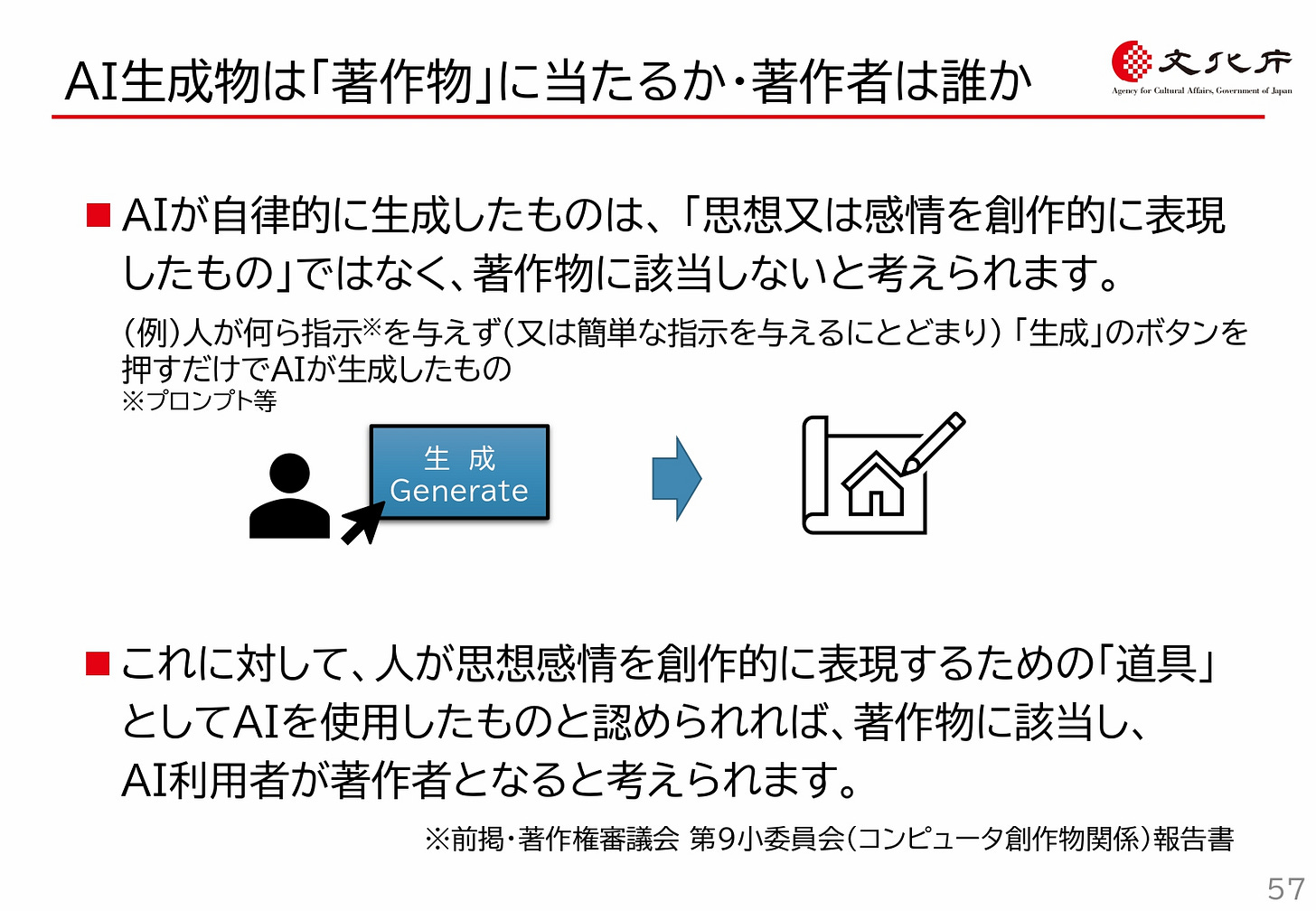We receive numerous inquiries from companies across various industries about creating and developing projects that combine AI and virtual humans.
Due to the relatively uncharted nature of AI technology, there are many important considerations to keep in mind.
In this article, we focus on generative AI and the associated rights issues.
We hope this article will be helpful to those reading it.
(Note: The characters created by Aww Inc. are not made using generative AI but through our proprietary 3D CG technology called the "Master Model." We want to clarify this difference to avoid any confusion in the following content.)
Current Legal Interpretations of Generative AI and the Rights Issues It Raises
First, what is generative AI? It is defined as follows:
Generative AI refers to a type of artificial intelligence that can create new content, such as text, images, music, and more, by learning from existing data. Unlike traditional AI, which primarily focuses on analyzing and interpreting data, generative AI generates new data that is similar in style or content to what it has been trained on. This technology is used in various applications, including natural language processing, image generation, and even in creating virtual worlds.
Here is a link to a detailed explanation: Forbes - What is Generative AI?
This explanation covers the basics of what generative AI is, how it works, and its potential impact on various industries.
Content generated by generative AI can potentially resemble existing works, trademarks, or designs, which in some cases may be considered an infringement of rights.
This article mainly discusses three types of rights:
Copyright
Design Rights
Trademark Rights
Note: There are other rights involved, but to avoid complexity, we focus on these three.
1. Generative AI and Copyright
Copyright protects creative expressions of ideas or emotions in the fields of literature, academia, art, or music.
As of now, the legal consensus is that works generated autonomously by AI do not have copyright protection.
Therefore, images or videos created by generative AI are not recognized as having copyright, and no rights are associated with the produced work itself. This means that if a company uses generative AI to create a character, the character can be used by others without permission, and the company cannot claim infringement. This could potentially lead to financial losses for the business.
Source: https://www.bunka.go.jp/seisaku/chosakuken/pdf/93903601_01.pdf
In business, if a company wants to own or use an AI influencer or creates a character using AI, that generated content is not recognized as having copyright.
In such cases, if another company uses that character to create content, it is not considered infringement, raising concerns about the impact on business activities.
There are cases where copyright is recognized when there is "creative contribution" by humans during the creation process.
2. Generative AI and Design Rights and Trademark Rights
Both design rights and trademark rights require registration with the Patent office.
These rights protect registered designs and marks that distinguish products or services from others. If a design or logo created by generative AI is identical or similar to an existing one, it constitutes infringement.
Although it is a black box how AI tools are trained, if other companies' service names or logos are used in prompts to generate content, it would be considered an infringement of rights.
What About the Copyright of Aww’s Virtual Humans?
First, it is important to note that characters themselves do not have copyright.
For example, the concept of the character "Son Goku" from Dragon Ball does not have copyright, but each book or video depicting Son Goku is copyrighted.
The virtual humans provided by Aww are not created by generative AI but by CG.
The Master Model, Aww's proprietary master data, is copyrighted, so the characters generated based on it are recognized as copyrighted.
Virtual humans created using the Master Model's master data can be used as virtual influencers or systems with copyright protection.
Using Generative AI
Generative AI offers many advantages in terms of speed and cost efficiency in content creation, and we actively use it in Aw. We recommend creating original characters as the base and then using generative AI for surrounding creative work.
While generative AI is convenient for creating large amounts of content at an overwhelming speed, there are still many points to be aware of and risks that must be recognized.
Training AI on data from virtual humans protected by copyright allows for the generation of images and videos while minimizing the risk of copyright infringement.
For job inquiries, media coverage, or interviews with our team, please contact us via the link below.
▼Contact
https://aww.tokyo/contact/
For more information about our company and the latest updates, please visit our official website.
▼Company Website
https://aww.tokyo/







